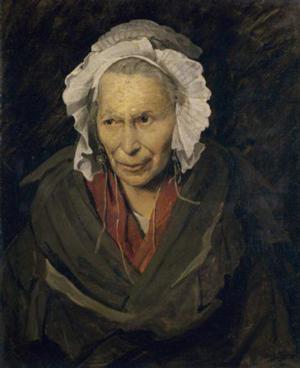Jean Louis André Théodore Géricault (1791-1824) was born in Rouen, France but spent most of his school days at Paris. Théodore Géricault’s life and career personifies Romanticism. A classmate of renowned painter Delacroix and at the same time studied with Vernet and Guerin. Géricault’s unhappy love affair led him to fly to Italy to study Michelangelo’s style of artwork which influenced him in making sculptural drawings as his earliest works. In 1812, Géricault displayed his baroque painting “Officer of the Imperial Guard, composed of synthetic Venetian colors which made the painting look striking and influential.
After a couple of years, Géricault created the “Wounded Cuirassier” painting during his involvement with the Bourbon Musketeers, which at the same time he served as a cavalry officer to the French royal house. Most of Géricault’s works manifest political mishaps in France which clearly earned disapproval from the French government. Géricault then went to England and experienced triumph in his works and enjoyed elegant lifestyle.
Unlike any other portrait painters, Géricault had a different approach of his subject in his portrait paintings. He conveyed expressive emotional realisms in each of his subject with a touch of bravura style which made the paintings look remarkable. Géricault came from a family with psychological issues in the past, an unforgettable experience which gave him the idea on taking individuals with psychological problems as his subject; the insane and the mentally ill. He painted in extremes with compelling sense of exceptional and classical portrayal of the figures and formation of the masterpieces in comparison to the hurly-burly of the subject, and bridging the gap between the styles of neo-classicism and romanticism.
His famous portrait painting “Woman Suffering from Obsessive Envy”, also known as the Hyena of the Salpêtrière (displayed in Musee des Beaux Arts, Lyon), was evident of Géricault’s interest of an individual’s psychological imbalance as he had been to mental institutions before which inspired his creations in an odd way. Made in oil canvas, this painting was just one of the series of five portraits of mad people. It showed a woman’s bulging eyes conveying fear and distress.
Géricault’s paintings seemed odd and strange but the main point of his artwork went beyond stereotyped portraitures. He instead gave importance to the deeper sense of his portrait paintings, like the Insane Woman’s portrait in which he caught the intricate elements of the woman’s entire loo, including her clothing and cap and her eccentric expression; eyes brimmed with sorrowful sufferings which perfectly conveyed her actual emotions and a strong state of hypnotic power.
Géricault focused on the diversity of emotions in his subjects, engaging in realism and catching the truth. He was interested with the different mental states of a human’s face which revealed character and varying emotions. Géricault made several studies of the individuals locked in asylums and mental institutions; he even considered studying the heads of the guillotine victims. This was how obsessed this eccentric painter was on his subjects.
He was a painter who looked into the extremes of his subject without getting overrated and conventional. His realism and sense of truth was unlike any other painter known in history.
Author: Shyxter
